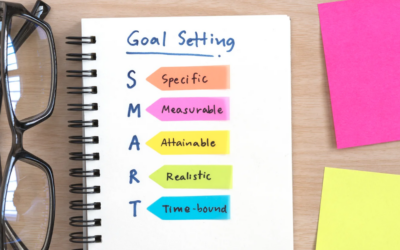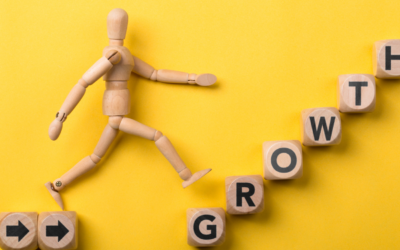No time to listen now? We'll send it to your inbox.
No time to listen now? We'll send it to your inbox.
or scroll down to get the highlights

My Lightbulb Moment About Conversion
If you’ve ever found yourself wondering why some of the tactics you try work like gangbusters, and others land like a lead balloon, this one’s for you. I recently had a moment of clarity that made me realize that many of us are missing a crucial piece of the sales puzzle.
And I want to share it with you, because it could potentially transform the way you approach sales.
The One Thing Almost All Ecommerce Store Owners (Including Me) Skip
I was on a call recently with my mastermind members, and these people are all very advanced. They all have multi -six, multi -seven -figure online stores; they’re super smart, focused, they know how to get sales, they have it all figured out. But one of them was sharing that she had made an offer that completely flopped. And I had this lightbulb moment – here she was re-thinking her entire strategy, but the truth is that it wasn’t a problem with her offer, it was a problem with her sales funnel.
The Ecommerce Sales Funnel Explained
The term ‘sales funnel’ might sound familiar to you, but if you’re like many newer Inner Circle members, you have a hazy idea of what it means. You might even believe it doesn’t apply to your online business. We prefer to call it “The Big Picture” because really it refers to all of the things that have to happen before a customer makes a purchase.
At the top of the sales funnel, you’ll find the widest and largest segment of people who are aware of your brand. They’re familiar with your store to some extent and might have a general understanding of what you offer. Essentially, they’re the people who have you on their radar, though their engagement might be minimal at this stage. This segment is crucial as it forms the broadest base of potential customers in your funnel.
“What we know is that when you look at your audience as a big pool of people, you can reliably count on between one and maybe two or 3% of those people clicking on your thing and going to your website, and then they become traffic.”
The next layer of your funnel is traffic. Those are people who have visited your product page, and have far more awareness of what you sell.
And then the last, narrowest part of the funnel is conversion. Those are the people who actually make a purchase from your store.
If you’ve ever heard of people “falling out of your funnel” that would refer to the folks who maybe liked a post on your social media feed, but never took the next step to visit your site. Or the people who viewed a product, but realized it’s not for them, and never returned. You lose a lot of people as your funnel narrows, and that’s completely normal. But you’ll run out of steam quickly if you don’t keep that top-line audience (the awareness stage of your funnel) filled with prospects at all times.
Troubleshooting Your Funnel: A Data-Driven Approach
Each month in the Inner Circle we fill out our numbers at each stage of the funnel: awareness, traffic, and conversion. Typically, you can expect between 1% to 3% of your awareness audience to engage by clicking on your advertisements or links and visiting your website, becoming actual traffic. For instance, on a good day, 1% to 3% of people who know about you will check out your product page or website.
Moving down the funnel, when we look at the traffic segment (those who have visited your site), on average only about 1% to 2% of these visitors will convert into buyers.
Let’s put this into perspective with an example: If your initial audience is 10,000 individuals and 2% of them, which is 200 people, visit your site, then you’re moving those people from broad awareness to specific interest. Now, if your overall site conversion rate is 2%, out of those 200 visitors, 4 will make a purchase.
This progression from a broad audience to traffic to actual buyers is the essence of the sales funnel, or the narrowing journey from initial awareness to final purchase.
It’s Not Your Offer, It’s Your Reach
So back to my Mastermind member with the floppy offer. I inquired about the number of individuals she targeted, essentially trying to understand the size of her audience. I also wanted to know how she had promoted, and about the methods she used to engage her audience.
She revealed that her audience consisted of 70 individuals, reached through an email campaign and a Facebook group post. This begged the question: how many from this group actually went on to visit the product page?
It’s tempting to assume that every recipient of the email and post viewed the offer, but that’s magical thinking. Given that these 70 individuals are part of a paid membership—suggesting higher engagement—I used my own paid membership stats as a benchmark: a 65% to 70% open rate for emails and around 10% engagement for Facebook group posts.
By these metrics, less than 50 of the targeted 70 might have seen the offer. If we assume a 60% email open rate and a 10% Facebook post engagement, the actual number of viewers is likely even smaller. And when we delve into how many clicked through—the true measure of traffic—it’s likely that fewer than 10 people engaged in any real way with the offer.
Considering she sold two units, this translates to a pretty impressive conversion rate of around 20%. This is WAY higher than the standard conversion rate, and gives us a critical insight: the challenge wasn’t the quality of the offer, but its visibility.
It’s a classic sales funnel issue—without sufficient audience reach, even the most compelling offers can flop.
The Keys To Conversion: Scarcity, Urgency, Exclusivity
Here’s something else I want you to onboard when creating any offer. It’s the power of enhancing appeal through three key elements: scarcity, urgency, and exclusivity. In the case of my mastermind friend, the offer was available exclusively to a select group. But because it was accessible throughout an entire month, it lacked scarcity and urgency. Add to that the small number of people she began with, and her poor results were predictable.
But imagine if she had announced that only ten items were available, and then updated her audience via social and email as the number dwindled to seven. That’s the kind of FOMO she might have leveraged to really engage and motivate her audience. If she had started out with a much larger number of people at the top of her funnel, that offer might have gone from dud to dynamite.
The lesson is this – when launching an offer, think beyond the basics. Focus on expanding your audience and building awareness. Whether through ads, social media posts, or pre-announcing it to your email list, increasing visibility at the top of the sales funnel makes all the difference. You’re not just informing potential customers about the offer but also creating a sense of anticipation and exclusivity that can lead to better results.
Putting It Into Practice
Now, let’s say you aim to reach 50,000 people with your offer. You need to determine how much of this audience will actually visit your page—this is the middle of your sales funnel. Understanding your email click rate and social media post engagement is key here. These metrics will tell you how frequently you should email or post to achieve your desired traffic levels.
Next, consider your sales goals. How many units do you realistically intend to sell? It’s crucial to align your inventory or production with these expectations—there’s no point in overstocking 144 items if you’re likely to sell only seven.
Finally, after laying this groundwork, introduce elements like scarcity, urgency, or exclusivity to incentivize immediate purchases. These three things can significantly boost your offer’s attractiveness and get potential customers to act fast.
Lessons Learned
Without asking these questions, my floppy-offer friend probably would have given up this strategy altogether. She never would have known that she was actually making a GREAT, high-value offer, she just wasn’t putting it in front of enough people. And the truth is, we always get the worst results the first time we try something. So after looking at the data, my friend now knows that taking the time in the month leading up to her offer to build anticipation and awareness would have made all the difference, and she’s going to work a lot harder next time to fill that top of funnel.
This is why I love data, because numbers don’t lie. We can waste energy feeling sorry for ourselves, or we can look at the data and realize that we missed a step, and make it better next time. The data tells us that we CAN control the outcome, and it tells us exactly what we need to do to achieve our goals.
If your conversion rate is 1%, and you have less than a hundred site visitors, you can expect to sell zero. So is that a problem with a product? Or is that a problem with the traffic?
We’ve all made the mistake of setting a goal, like making one sale a day, without fully considering how much traffic we actually need to achieve it. But realistically, attracting enough visitors daily doesn’t happen just because you’ve built a pretty website and turned on the “open” sign. By planning your approach and setting clear goals for traffic and sales, you’re not just throwing things at the wall to see what sticks. You’re making calculated decisions that could significantly improve your results.
I hope this perspective offers you a fresh angle on how to refine your strategy. It’s not about dwelling on past missteps; it’s about adjusting your tactics to enhance your business’s success. Give it a shot and see the difference it can make in your sales outcomes.
RELATED LINKS:
Why You’re Not Getting Results
https://thesocialsalesgirls.com/why-youre-not-getting-results-episode-1/
How To Create Profit Goals
https://thesocialsalesgirls.com/how-to-create-profit-goals-episode-209/
Not Getting Sales? Here’s How To Figure Out What’s Wrong
https://thesocialsalesgirls.com/ten-months-of-sales-at-my-new-store-episode-15/
How To Solve Your Sales Problem
https://thesocialsalesgirls.com/how-to-solve-your-sales-problem-episode-70/
What You CAN Do When Nothing’s Working
https://thesocialsalesgirls.com/what-you-can-do-when-nothing-is-working-episode-74/
8 Ways To Get Sales NOW
https://thesocialsalesgirls.com/8-ways-to-get-sales-now-episode-125/
Get my new course, Conversion School for Free!
Learn our step by step process to grow your sales, without spending a
fortune on risky ad strategies, or discounting your products
The strategy you’ll learn in Conversion School works for Ecommerce stores at all stages.
You'll use your store’s data, so if you’re starting out, you’ll learn how to get consistent sales.
Established Store Owners will learn how to achieve significant sales growth every month.
A Little Trick To Get The Results You Really Want, Episode 225
No time to listen now? We'll send it to your inbox. No time to listen now? We'll send it to your inbox. or scroll down to get the highlightsHow to Set the Right Goals and Achieve Clarity in Your Business Recently,...
From 0 to multiple 6 figures. The story of a creative success, Episode 224
No time to listen now? We'll send it to your inbox. No time to listen now? We'll send it to your inbox. or scroll down to get the highlightsI get this question all the time: can artists and creatives really earn an...
How Erica supersized her profit and wiped out her stress, Episode 223
No time to listen now? We'll send it to your inbox. No time to listen now? We'll send it to your inbox. or scroll down to get the highlightsHow Erica Campbell Turned Her Faith-Based Gift Shop Into A Profitable Business...



